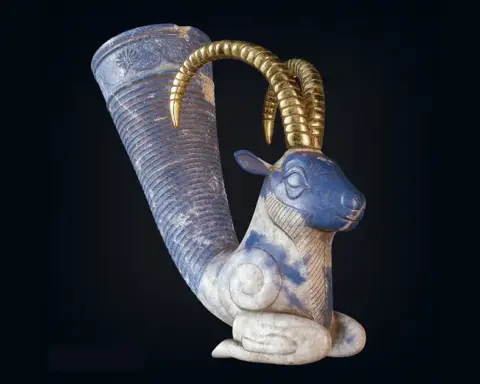A recent discovery of a 330-million-year-old octopus fossil in Montana has turned our understanding of cephalopod evolution on its head. This extraordinary find, hidden within the Bear Gulch limestone formation, challenges established notions about the existence of octopuses in prehistoric times. Let’s delve into the details of this remarkable fossil and uncover the secrets it holds.
The fossil, measuring a modest size of inches, is adorned with limbs, two more than contemporary octopuses. Its well-preserved form, encased in limestone, remained undiscovered for decades among other fossilized relics until paleontologists recognized its significance. Named Syllipsimopodi bideni in homage to President Joe Biden, this ancient cephalopod now holds the title of the oldest known ancestor of octopuses.

Christopher Whalen, co-author of the revelatory study published in Nature Communications, emphasizes the rarity of soft tissue fossils and the profound implications of this discovery. The fossil’s striking resemblance to modern octopuses, with ten limbs and evidence of an ink sac, reveals intriguing parallels in their evolutionary trajectory. It not only redefines the origins of octopuses but also blurs the lines between their evolutionary cousins, the vampire squid.
This groundbreaking finding pushes back the ancestry of octopuses by millions of years, challenging established timelines. It urges us to reconsider their evolutionary journey and reevaluate the mysteries of ancient seas and the enigmatic creatures that once roamed them. The significance of this discovery stretches beyond its age, serving as a testament to our relentless pursuit of knowledge and the revelations that await those who delve into the depths of our planet’s history.

The existence of octopuses before dinosaurs raises questions about their survival strategies and adaptations in the ancient world. How did they navigate the oceans? What were their prey and predators? Were they capable of camouflage and intricate problem-solving, traits we observe in modern octopuses?
This ancient cephalopod fossil also invites us to ponder the interconnectedness of life on Earth. As we uncover more about the evolutionary history of octopuses, we may gain insights into the broader web of life and the intricate relationships between different species.
In conclusion, the discovery of a 330-million-year-old octopus fossil in Montana challenges our understanding of cephalopod evolution and the timeline of octopus existence. This remarkable find sheds light on the origins of octopuses and blurs the lines between their evolutionary cousins. It beckons us to reevaluate the mysteries of ancient seas and the enigmatic creatures that inhabited them. As we continue to unravel the secrets of our planet’s past, this ancient cephalopod stands as a symbol of our unyielding curiosity and the wonders that await us in the depths of history.
VIDEO:






